#anti liberal
Text
I'm tired of rebellion only being acceptable if you rebel in a politically correct fashion.
I'm tired of hate speech being acceptable as long as it's directed at the "correct group."
I'm tired of watching the church bow down to deranged elitists and corrupt government.
I'm tired of truth being manipulated.
I'm tired of cancel culture being normalized.
I'm tired of intolerance being tolerated.
I'm tired of skin color being a factor in judging and loving others.
I'm tired of equality turning into revenge.
I'm tired of gender defining identity, expectations and capability.
I'm tired of the "kill all men" twisted doctrine.
I'm tired of misogyny and chauvinism.
I'm tired of the boxes and the stereotypes...
With no space allowed to exist in between.
Let's start a proper revolution.
A revolution of love.
A revolution of proud existence, proud resistance and total disregard to what is considered "acceptable."
A revolution they can't dictate. They can't profit from. They can't control.
A revolution they can't stick in boxes of left or right or central or up or down or sideways.
Anarchy in its purest form.
Reblog if you see through the political mind manipulation games of the modern world.
#anarchy#christian anarchy#christian anarchism#christian anarchist#politics#anti politics#anti republican#anti democracy#anti leftist#anti liberal#anti liberalism#anti right wing#anti conservative#people before profit#christian punk#christian alternative#feminism#cancel culture#hate speech#equality#anti racism#rebellion#reblog the shit out of this#rebel#political rant#political#acceptance#break free#freedom#christianity
23 notes
·
View notes
Text
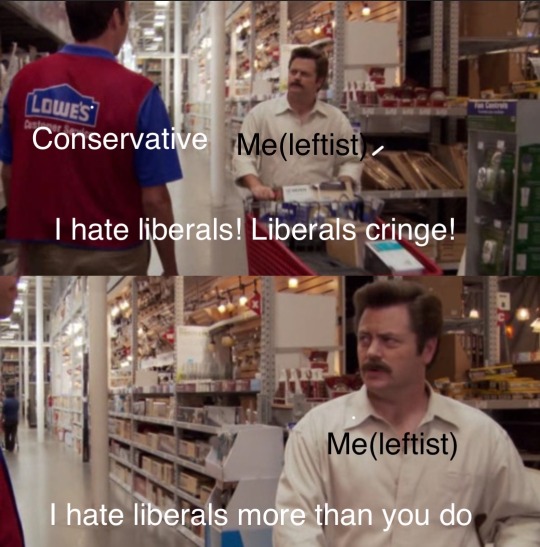
44 notes
·
View notes
Text
By: Allan Stratton
Published: Jul 23, 2023
Toronto is one of the most tolerant, multicultural cities in the world. And yet, according to many of its progressive journalists, academics, and politicians, it’s actually a den of systemic racism, sexism, homophobia and transphobia. Unless you’re a straight white man, daily life is supposedly an exhausting and dangerous struggle. If you live in the United States, the UK, Australia, or elsewhere in Canada, I’m guessing you’ve been told similar things about your own society.
I’m a gay man for whom these reports bear no relationship to the real world. Certainly, hate-crime statistics show a sharp increase in physical and verbal abuse against specific demographics, including my own. And there are even rare incidents of murder and arson. But to suggest that minorities live under constant threat from a bigoted majority is apocalyptic nonsense. This is especially true of Canada, an especially open, diverse, and welcoming country. Western nations, more generally, are incontrovertibly the most tolerant on the planet.
My heretical view (among fellow progressives, at least) may be due to my “positionality” (this being a faddishly woke jargon term that most English speakers would call “perspective”). The Holocaust and the internment of Japanese North Americans ended a mere six years before I was born. The pass system that turned Canadian Indigenous reservations into open-air prison camps was still in force. The United States was segregated by Jim Crow and redlining. Cross burnings and lynchings went unpunished. Marital rape was legal. Spousal abuse and unequal pay were commonplace. Gay sex and cross-dressing were criminalized, with outed individuals losing their jobs and children. “Fag bashing” was treated as public entertainment.
In the relatively few decades since, western governments have implemented universal civil and human rights protections for racial and sexual minorities. The speed and depth of this transformation has been so remarkable that it seems inconceivable that we ever lived as we once did. Has any other culture critiqued its failings and set about reforming itself so quickly?
This is not to suggest that everything is sunshine and lollipops. Human nature has not been repealed. Police departments without effective civilian oversight, for instance, continue to invite corruption and abuse. Nonetheless, we now have the tools to press for accountability, such as human rights tribunals and whistleblower protections.
It’s also important to acknowledge that while the relative increase in reported hate crimes may seem shocking, that rise is based on a remarkably low baseline. For instance, 2021 saw a 65 per cent increase in incidents (over 50 per cent of these comprising verbal slurs) targeting Canada’s LGB and T communities. But that still represents just 423 cases in a country of 40-million people. That’s hardly a “tsunami of hate.” The number is infinitesimal compared to the 114,132 domestic assaults and 34,242 sexual assaults recorded against women.
One often hears that a reversion to the backward ways of the past is just around the corner. And it is true that abortion rights now hang in the balance in many conservative U.S. states. But the idea that any Western country (especially Canada) is on the cusp of a wholesale rejection of liberal principles is absurd. Women will never again need their husband’s signature to open a bank account. Racial segregation is unthinkable (except, ironically, in certain progressive institutions). Marriage equality for same-sex couples is constitutionally protected in North America, and enjoys a historic 70 per cent level of support in the United States.
So, unlike those on the left who came of age in the 90s and the decades that followed, I don’t see an intolerant society destroying civil rights and minority safety. Rather, what I am now witnessing is a period of progressive overreach, led by ideologues with no (apparent) historical memory or understanding of how our liberal social contract evolved. They have turned language inside out so as to render words such as “woman,” “safety,” and “genocide” essentially meaningless; pursued policies that lock one-time progressive allies in a zero-sum culture-war conflict; recast free speech as hate speech; confused wishes (and, in some cases, fantasies) with rights; and punished dissenters from their Borg-think with social exclusion, “re-education,” and firing.
This radical attempt to unilaterally impose a new social order based on race and gender essentialism has ignited a widespread public backlash, which has been weaponized by the far right, destroyed public goodwill, and done more damage to the progressive cause than anything its reactionary enemies have done in recent years.
-
The civil-rights movements of the last century won victories by liberal means based on liberal values. This included an insistence on free speech and civil liberties; and an appeal to the universal values of dignity and equality, which in turn underpin the case for protecting individual human rights and freedoms.
In part, this was because we liberals understood math. We needed white, straight, male legislators to support our causes, a project that could only be engaged through free and open debate. Empathy-based co-operation enabled us to create bridges among our diverse groups: The Gay Liberation Front raised money for the Black Panthers. In turn, its leader, Huey Newton, supported the gay liberation and women’s liberation movements. Meanwhile, Jewish groups applied their historical understanding of discrimination to help lead the fights for women’s rights (Betty Friedan), gay rights (Larry Kramer), and black voting rights, with some even giving their lives as Freedom Riders
By contrast, today’s illiberal left explicitly rejects the principles of free speech and universality. It ignores the lessons of past civil-rights successes, often denying that such successes even took place. After all, how can one insist on the dismantling (or “decolonization”) of a system that has shown itself capable of self-correction and continuous improvement? The only framework that validates the progressive narrative of ongoing oppression and white supremacy is one that ahistorically presents mainstream liberal values as a failure.
The switch in social-justice circles from liberal to authoritarian ends and means has at least three major causes. The first is structural: As (originally) liberal rights groups such as the ACLU achieved their objectives, they were required to rewrite their mission statements and pretend away their past successes — this being the only way to justify their ongoing existence.
Far from seeking to “burn it all down,” most of us within the original LGB and T movements simply wanted equality within existing social structures. We used liberal “respectability politics” to make our case, and (for the most part) folded our tents when we achieved our goal. The unwitting effect of this was to leave our old organizations to the radicals, who had long condemned us as sellouts to the patriarchy. Their goal is nothing less than the remaking — or “queering” — of society, a vaguely defined project infused with a deep suspicion of, or even hostility to, capitalism and the nuclear family. The liberal LGB and T wish to live and let live is now the authoritarian “live as we live.”
The second factor is generational change. Just as children separate from their parents in their passage to adulthood, so does each generation define itself in contradistinction to its immediate predecessor. Without personal memory of past struggles, present conditions are taken for granted. And so the battle against current injustices (real or otherwise) is seen as humanity’s defining and timeless struggle.
My generation mocked our parents’ conformity and stoic, suck-it-up ethos, forgetting that these traits had been necessary social adaptations during the Great Depression and World War II. Similarly, activists of this generation attack our commitment to free speech and integration within society, forgetting that these strategies were necessary for us to be heard during the Cold War, when outsiders were suspected as potential fifth columnists.
But perhaps the most significant factor has been the academic trend toward postmodernism, which instructs adherents that neither objective reality nor human nature exist in any certain, provable way. Reason, logic, and objective facts are rejected — or at least put in scare quotes — as are appeals to history and science. These are all held to be mere artifacts of language, which is itself presented as a reflection of existing power structures. And since these structures are presumed to systematically oppress the powerless, they must be deconstructed, dismantled, and decolonized, root and branch.
This kind of thinking isn’t just claptrap that flies in the face of day-to-day human experience. It also encourages a kind of intellectual nihilism that precludes amelioration of the injustices and power imbalances that supposedly concern many postmodern thinkers: After all, what could possibly replace our current power-based intellectual constructs except new power-based intellectual constructs?
Nonetheless, postmodern habits of mind (often flying under the banner of “critical” studies of one kind or another) have infected academic humanities and social science departments all over the west, much like the fungal parasite on The Last of Us. Its professorial hosts now work to dismantle their own institutions, attacking the “colonial” concepts of science and empiricism in favour of undefined and unfalsifiable “ways of knowing.” Meanwhile, their students have incubated its spores and spread them into the wider society, including corporate human-rights offices.
Progressives (rightly) have denounced Donald Trump and his supporters for their paranoid belief that the 2020 U.S. election was “stolen.” But these right-wing conspiracy theorists are not so different from campus leftists when it comes to their à la carte approach to accepting or rejecting reality according to passing ideological convenience
In particular, the idea that pronouns serve as magic spells that can turn a man into a (literal) women is no less ridiculous than anything Trump has ever said. The same goes for the mantra that while girls who cut themselves need therapy, girls seeking a double mastectomy require “affirmation.” Likewise: Racial segregation is a bigoted practice … except when it represents the very acme of progressive enlightenment. “Defund the police” doesn’t mean abolish the police, except when it means exactly that.
And then there’s Schrödinger’s Antifa, which presents these street thugs either as a very real force that rose up as a morally laudable reaction to fascism … or as something that exists only in Tucker Carlson’s fever dreams, depending on context.
But postmodernism and critical theory have done more than just damage our societies’ intellectual cohesion. Their denial of universal human nature eliminates empathy as a tool to bridge differences among groups, which are instead presented as warring sects prosecuting unbridgeable race (or gender) feuds. Since power is presented as the singular currency of the realm, the ability to shut the other side up is valued more than the ability to persuade it.
Gay men such as Andrew Sullivan and Andrew Doyle have been among the most prominent dissenters against wokeism — in part because we instinctively recognize the destructive nature of this power-fixated mindset. Our experience suggests that empathy and reason are far more important than threats and cultural power plays.
Dave Chappelle has said that the LGBT movement won public support more quickly than its black counterpart because of racism. But I believe the truth is different: Unlike racial and ethnic minorities, we exist in every demographic, every family, every ethnic category. When we gay men came out en masse during the 1980s AIDS pandemic, all communities realized that we were among its children, parents, and siblings. People have a harder time discriminating against their own than against outsiders.
Traditionally, the left has appealed to a sense of camaraderie and shared purpose. The resulting project of alliance-building has entailed negotiation among different groups, all of which may have different priorities and perspectives. But that alliance-building project becomes impossible when one sect or another demands that disagreement be treated as a form of thoughtcrime. Deplatforming doesn’t just hurt the target; it also hurts the movement, since the summary excommunication of dissidents means that adherents never need to acknowledge or address counterarguments, internal logical inconsistencies, or the off-putting nature of their message.
Indeed, ideologues such as Nikole Hannah-Jones claim that politics has a colour: Blacks who aren’t “politically black” are traitors who collaborate with “whiteness.” As seen through this lens, Asian-Americans who fight anti-Asian discrimination in the context of affirmative action are supposedly puppets of white supremacists, and the LGB Alliance, by standing up for same-sex attraction, is smeared as a transphobic hate group. (For asserting that biology is real, Stonewall UK even tried to destroy the career of one of the LGB Alliance’s founders, Allison Bailey, a lifelong social justice advocate who happens to be a black, working-class lesbian, and the child of immigrant parents. Thankfully, Stonewall did not prevail.)
Opponents of cancel culture often focus on its negative effects on conservatives. But it’s often woke organizations that end up imploding under its strains, typically due to internal battles over victimhood status and linguistic control. In recent years, many of these groups have been driven off the rails by single-issue gender activists who are willing to support misogyny and homophobia in the name of trans rights; or BLM activists willing to permit racism directed at “model minorities.” Even antisemites have been allowed to infiltrate left-wing political parties, the arts establishment, and anti-racist education initiatives. No wonder everyone involved with this movement is always complaining about how emotionally “exhausted” they are: They’re surrounded by toxic fellow travellers who gaslight them as right-stooges if they dare raise a complaint.
Another notable feature of militant social-justice movements is the sheer joylessness of their leaders and supporters, a condition that often seems to blur into a collectively embraced state of clinical depression and paranoia. This posture flows from their presupposition that they suffer endlessly due to the malignant primordial character of “whiteness” and heteronormativity (or, yet worse, cisheteronormativity). The language of individual agency and hope, which animates liberalism, is replaced with a soul-dead idiom by which the activist presents as a self-pitying victim of oppression, constantly at risk of suicidal ideation, erasure, and genocide.
Even privileged “allies” are encouraged to dwell on their whiteness, straightness, cisness, “settler” status, and other marks of intersectional Cain. By erasing the possibility of redemption, the movement alienates liberal allies who are seeking to build bridges with others en route to living successful and fulfilling lives in a way that escapes the politics of identity. The social-justice puritan, being primarily concerned with advancing his status within a cultish inward-seeking subculture that’s constantly inventing new grievances, on the other hand, finds such a goal unthinkable.
The use of words such as “harm” and “violence” to describe the microaggressions known to the rest of us as “daily life” is a particularly unattractive feature of social-justice culture. In the 1980s, gays and lesbians responded to daily discrimination with the chant, “We’re here, we’re queer, get used to it.” Today, the children and grandchildren of that generation, now enjoying full civil rights and perches within elites sectors of government, culture, and high society, instead tell us, “We’re here, we’re queer, and … we’re terrified to step outside.” As a gay man, it’s humiliating to hear this kind of maudlin rhetoric uttered in my name.
The broad public, long sympathetic and accommodating, has had it. People have no time for hysterical activists who whine, bully, and hector them about things they didn’t do and over which they have no control. This is particularly true when those same activists demand the elimination of women’s sex-based rights, the medical sterilization of children and teens, and the explicit exclusion of job applicants by race. The more that ordinary men and women came to learn about gay marriage, the more they accepted it. By contrast, the more that ordinary men and women come to learn about trans-activist demands and critical race theory, the more they’ve become repulsed.
Support for Black Lives Matter collapsed when the woke trivialized the arson and looting that accompanied the George Floyd protests. The public was completely onside with the left’s demand for police reform, but horrified by the extremist push to dismantle public security, and enraged that the left justified breaking pandemic restrictions for protests while insisting that grieving families be kept from their dying relatives in hospitals.
Likewise, Lia Thomas tanked support on gender radicalism. The public had long welcomed trans civil rights, sympathized with those suffering dysphoria, and accepted that even non-dysphoric trans-identified individuals should be able to live and present as they wished. But the sight of a strapping, butch male taking women’s prizes and opportunities was a breaststroke too far.
Facing resistance, the woke doubled down, insisting on automatic gender affirmation for everyone, including rapists and children. The result gifted social conservatives an issue of concern to majorities across the political spectrum. Now, progressives in the U.S. face a raft of bills that, among other things, resurrect false charges of Alphabet paedophilia. No wonder LGB groups are jettisoning the T: In the space of just a few years, trans activists have undone the good work that gay activists did over multiple generations.
The progressive movement must stand up to its extremists. We must restore the liberal social compact that won our civil and human rights. That means we should root our claims in areas of common ground, demanding fair treatment, but not the right to dictate what others think.
The most intense theatres of culture-war combat involve the education of children, an area in which liberal attitudes must be allowed to hold sway. Popular free speech principles should be applied to school libraries and curricula — which means opposing campaigns to root out books demonized by both the left and the right alike. In classrooms, an open exploration of history can provide a context for kids to discuss how injustices were overcome in the past and how they might be handled in the present. Students can be taught to brainstorm how to use their advantages to help the less fortunate, and how others in their situation have dealt with adversity. But they should never be taught that personal relationships and moral hierarchies are determined by the colour of one’s skin.
Likewise, boys and girls should be allowed to play and dress free of gender stereotypes, with a no-bullying policy strictly enforced. They should learn who they are by themselves, and be taught that they are more than the sum of their parts. They should not be labelled by ideological adults consumed by a mania for gender theory. In school, I skipped with the girls, had a lisp, and liked to play with china elves. That didn’t make me a girl, just as dressing butch and dreading the effects of a puberty doesn’t turn a lesbian into a boy. (I shudder to think what might have happened were I a child today.)
We should also return to the left’s traditional focus on class. Diversty, equity, and inclusion initiatives enrich the small group of well-educated profiteers who proselytize the DEI faith, but they’re actually worse than useless when it comes to workplaces, exacerbating intolerance among the hapless workers forced to submit to tedious seminars and questionnaires. Resources from the DEI industry’s rapidly metastasizing bureaucracies should be redirected to programs that materially help the poor: Unlike affirmative action programs, investments in deprived neighbourhoods disproportionately assist minorities without the creation of double-standards and racial left-behinds that serve to energize white nationalists. They also support social mobility and economic inclusion.
“I just want to say—you know—can we, can we all get along?” is how Rodney King put it in 1991. While many of us might read the underlying sentiment as self-evident, the militant social-justice left now treats it as a forbidden lie, since the entire movement is based on the conceit that peaceful and harmonious coexistence is impossible within a pluralistic liberal society that doesn’t forcibly “queer” itself, endlessly hector citizens about their bigotry, and segregate workers and students by skin colour.
I believe we can all get along. As a progressive, a gay man, a Canadian, and a liberal, I want no part of any movement — whatever it calls itself — that insists we can’t.
[ Mirror: https://archive.is/es3Q4 ]
==
To the extent that liberal principles are actually being rejected, it's coming from both the authoritarian reactionary right, and the authoritarian postmodern left.
#Allan Stratton#liberal ethics#liberal values#liberalism#illiberalism#antiliberalism#anti liberal#critical social justice#social justice#wokeism#cult of woke#wokeness as religion#woke#toxic wokeness#religion is a mental illness
23 notes
·
View notes
Text

#anti woke#woke culture#woke is a joke#anti left wing#anti liberal#anti democrat#usa#us government#us politics
6 notes
·
View notes
Text
If you have the belief that you cannot have a single thought in common with someone that primarily holds views different from your own, then you're kind of the closed-minded one.
#centrist#what is a woman#daily wire#lgbt#lgbtq#transgender#not right or left#anti liberal#the hypocrisy of the left#leftist bigotry
7 notes
·
View notes
Text
Liberals cannot be serious. How do you see "Democrats are currently in charge" and "cops are still assaulting and murdering people" and think "We just need to vote HARDER for more Democrats uwu. That'll show them!"

2 notes
·
View notes
Text
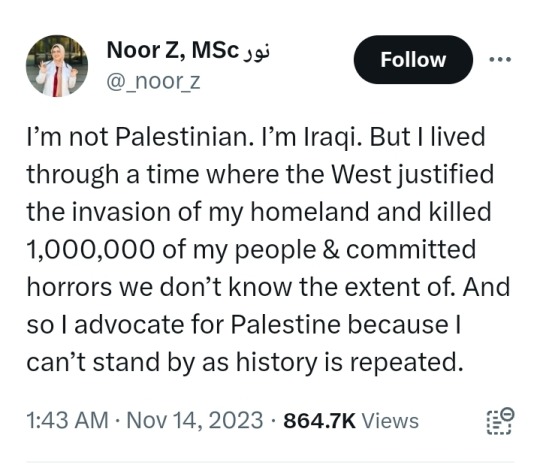
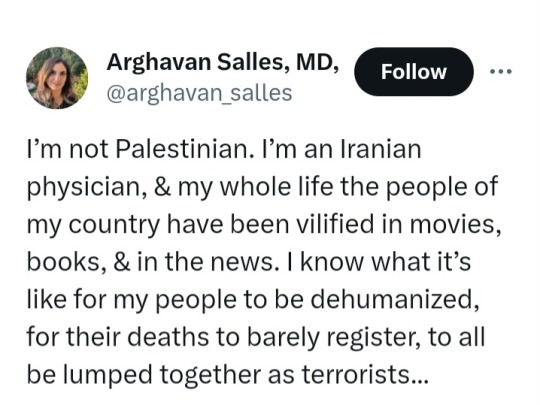


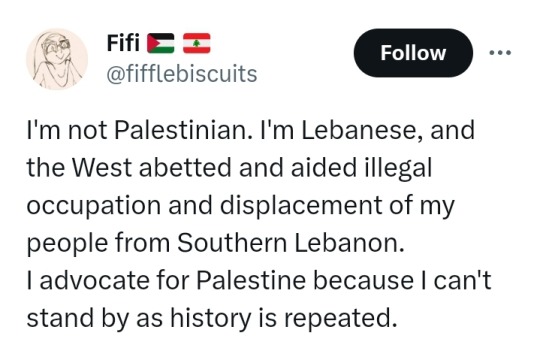





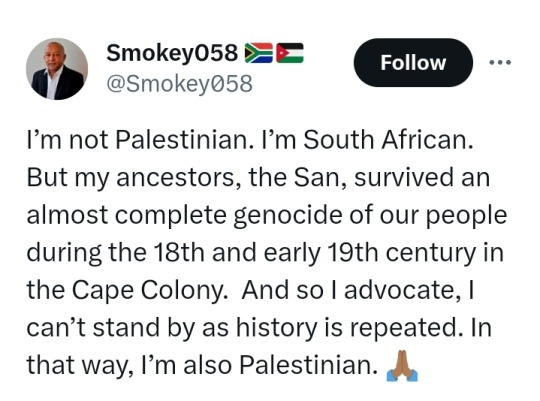

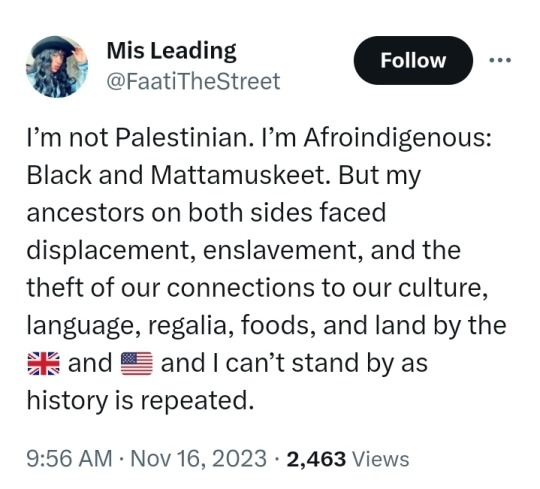
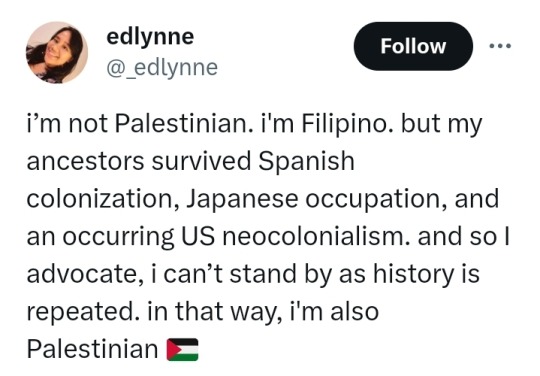
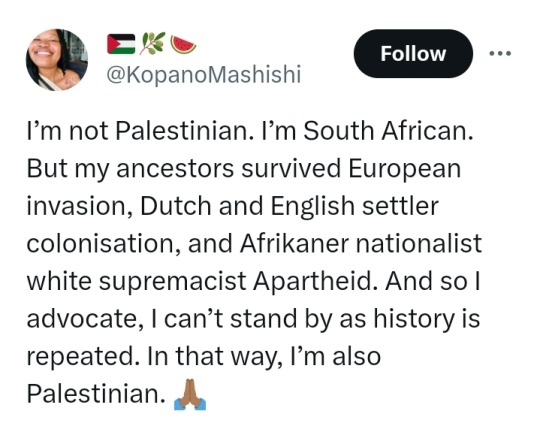
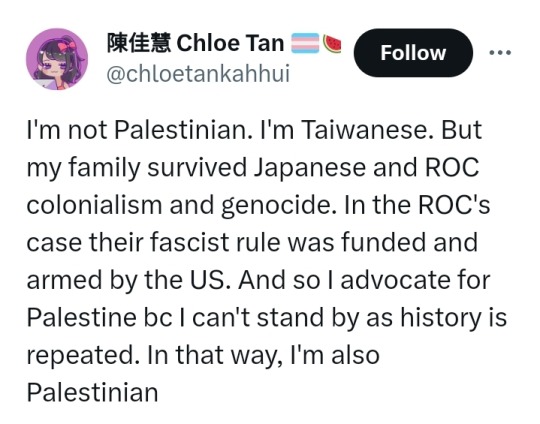
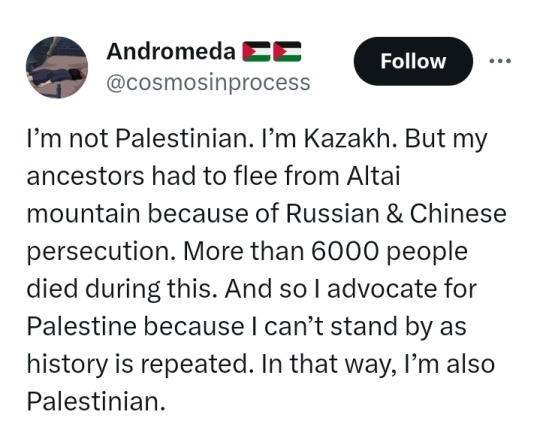


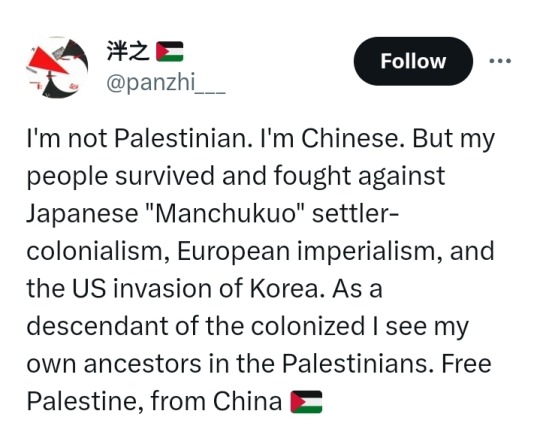

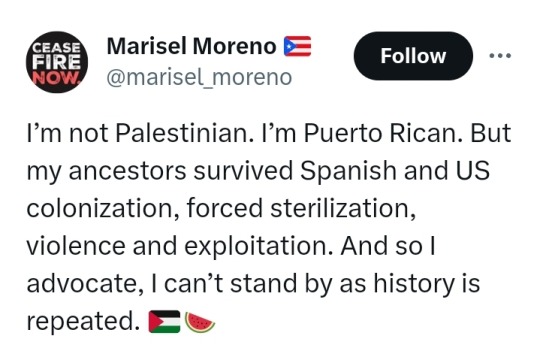


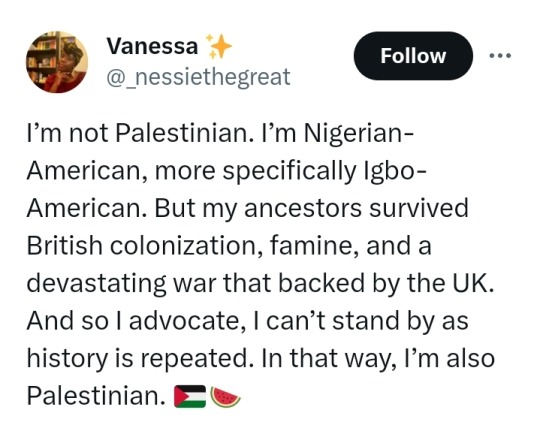

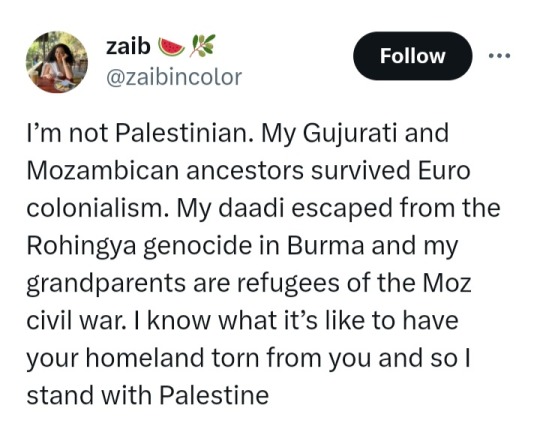
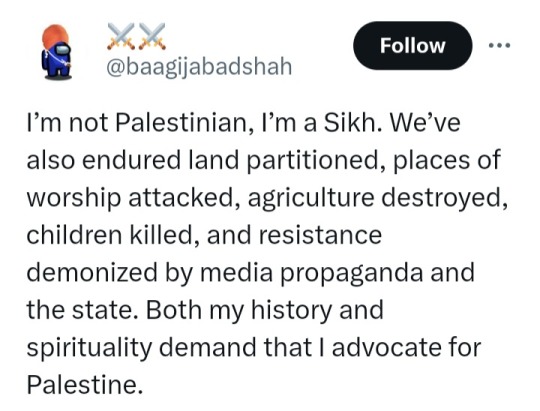
Freedom for Sudan! 🇸🇩
Freedom for The Congo! 🇨🇩
Freedom for Armenia! 🇦🇲
From River To The Sea, Palestine Will Be Free! 🇵🇸🇵🇸🇵🇸
#free palestine#''I am also Palestinian''#from river to the sea palestine will be free#genocide#colonization#imperialism#colonialism#liberation#DRC#congo#Islamphobia#Middle East#Africa#sudan#black power#Armenia#social justice#freedom struggle#holocaust#anti Zionism#racial justice#decolonization#desi tag#Indonesia#Iraq#Iran#Algeria#Latin America#China#Mexico
8K notes
·
View notes
Text
I don't know what trans man need to hear this but you're allowed to be angry. It doesn't make you evil. You are allowed to experience all possible emotions without apology and still be a good man.
*this is about trans men specifically, do not derail. You are free to make your own post*
#ftm#trans man#trans rights#transandrophobia#anti transmasculinity#this is about trans men having their manhood policed#all the people expressing themselves and saying thank you in the rbs i see you and i love you#trans liberation#do not derail#gender essentialism#bioessentialism#THIS IS ABOUT TRANS MEN DO NOT DERAIL
10K notes
·
View notes
Note
they have a point though. you wouldn't need everyone to accommodate you if you just lost weight, but you're too lazy to stick to a healthy diet and exercise. it's that simple. I'd like to see you back up your claims, but you have no proof. you have got to stop lying to yourselves and face the facts
Must I go through this again? Fine. FINE. You guys are working my nerves today. You want to talk about facing the facts? Let's face the fucking facts.
In 2022, the US market cap of the weight loss industry was $75 billion [1, 3]. In 2021, the global market cap of the weight loss industry was estimated at $224.27 billion [2].
In 2020, the market shrunk by about 25%, but rebounded and then some since then [1, 3] By 2030, the global weight loss industry is expected to be valued at $405.4 billion [2]. If diets really worked, this industry would fall overnight.
1. LaRosa, J. March 10, 2022. "U.S. Weight Loss Market Shrinks by 25% in 2020 with Pandemic, but Rebounds in 2021." Market Research Blog.
2. Staff. February 09, 2023. "[Latest] Global Weight Loss and Weight Management Market Size/Share Worth." Facts and Factors Research.
3. LaRosa, J. March 27, 2023. "U.S. Weight Loss Market Partially Recovers from the Pandemic." Market Research Blog.
Over 50 years of research conclusively demonstrates that virtually everyone who intentionally loses weight by manipulating their eating and exercise habits will regain the weight they lost within 3-5 years. And 75% will actually regain more weight than they lost [4].
4. Mann, T., Tomiyama, A.J., Westling, E., Lew, A.M., Samuels, B., Chatman, J. (2007). "Medicare’s Search For Effective Obesity Treatments: Diets Are Not The Answer." The American Psychologist, 62, 220-233. U.S. National Library of Medicine, Apr. 2007.
The annual odds of a fat person attaining a so-called “normal” weight and maintaining that for 5 years is approximately 1 in 1000 [5].
5. Fildes, A., Charlton, J., Rudisill, C., Littlejohns, P., Prevost, A.T., & Gulliford, M.C. (2015). “Probability of an Obese Person Attaining Normal Body Weight: Cohort Study Using Electronic Health Records.” American Journal of Public Health, July 16, 2015: e1–e6.
Doctors became so desperate that they resorted to amputating parts of the digestive tract (bariatric surgery) in the hopes that it might finally result in long-term weight-loss. Except that doesn’t work either. [6] And it turns out it causes death [7], addiction [8], malnutrition [9], and suicide [7].
6. Magro, Daniéla Oliviera, et al. “Long-Term Weight Regain after Gastric Bypass: A 5-Year Prospective Study - Obesity Surgery.” SpringerLink, 8 Apr. 2008.
7. Omalu, Bennet I, et al. “Death Rates and Causes of Death After Bariatric Surgery for Pennsylvania Residents, 1995 to 2004.” Jama Network, 1 Oct. 2007.
8. King, Wendy C., et al. “Prevalence of Alcohol Use Disorders Before and After Bariatric Surgery.” Jama Network, 20 June 2012.
9. Gletsu-Miller, Nana, and Breanne N. Wright. “Mineral Malnutrition Following Bariatric Surgery.” Advances In Nutrition: An International Review Journal, Sept. 2013.
Evidence suggests that repeatedly losing and gaining weight is linked to cardiovascular disease, stroke, diabetes and altered immune function [10].
10. Tomiyama, A Janet, et al. “Long‐term Effects of Dieting: Is Weight Loss Related to Health?” Social and Personality Psychology Compass, 6 July 2017.
Prescribed weight loss is the leading predictor of eating disorders [11].
11. Patton, GC, et al. “Onset of Adolescent Eating Disorders: Population Based Cohort Study over 3 Years.” BMJ (Clinical Research Ed.), 20 Mar. 1999.
The idea that “obesity” is unhealthy and can cause or exacerbate illnesses is a biased misrepresentation of the scientific literature that is informed more by bigotry than credible science [12].
12. Medvedyuk, Stella, et al. “Ideology, Obesity and the Social Determinants of Health: A Critical Analysis of the Obesity and Health Relationship” Taylor & Francis Online, 7 June 2017.
“Obesity” has no proven causative role in the onset of any chronic condition [13, 14] and its appearance may be a protective response to the onset of numerous chronic conditions generated from currently unknown causes [15, 16, 17, 18].
13. Kahn, BB, and JS Flier. “Obesity and Insulin Resistance.” The Journal of Clinical Investigation, Aug. 2000.
14. Cofield, Stacey S, et al. “Use of Causal Language in Observational Studies of Obesity and Nutrition.” Obesity Facts, 3 Dec. 2010.
15. Lavie, Carl J, et al. “Obesity and Cardiovascular Disease: Risk Factor, Paradox, and Impact of Weight Loss.” Journal of the American College of Cardiology, 26 May 2009.
16. Uretsky, Seth, et al. “Obesity Paradox in Patients with Hypertension and Coronary Artery Disease.” The American Journal of Medicine, Oct. 2007.
17. Mullen, John T, et al. “The Obesity Paradox: Body Mass Index and Outcomes in Patients Undergoing Nonbariatric General Surgery.” Annals of Surgery, July 2005. 18. Tseng, Chin-Hsiao. “Obesity Paradox: Differential Effects on Cancer and Noncancer Mortality in Patients with Type 2 Diabetes Mellitus.” Atherosclerosis, Jan. 2013.
Fatness was associated with only 1/3 the associated deaths that previous research estimated and being “overweight” conferred no increased risk at all, and may even be a protective factor against all-causes mortality relative to lower weight categories [19].
19. Flegal, Katherine M. “The Obesity Wars and the Education of a Researcher: A Personal Account.” Progress in Cardiovascular Diseases, 15 June 2021.
Studies have observed that about 30% of so-called “normal weight” people are “unhealthy” whereas about 50% of so-called “overweight” people are “healthy”. Thus, using the BMI as an indicator of health results in the misclassification of some 75 million people in the United States alone [20].
20. Rey-López, JP, et al. “The Prevalence of Metabolically Healthy Obesity: A Systematic Review and Critical Evaluation of the Definitions Used.” Obesity Reviews : An Official Journal of the International Association for the Study of Obesity, 15 Oct. 2014.
While epidemiologists use BMI to calculate national obesity rates (nearly 35% for adults and 18% for kids), the distinctions can be arbitrary. In 1998, the National Institutes of Health lowered the overweight threshold from 27.8 to 25—branding roughly 29 million Americans as fat overnight—to match international guidelines. But critics noted that those guidelines were drafted in part by the International Obesity Task Force, whose two principal funders were companies making weight loss drugs [21].
21. Butler, Kiera. “Why BMI Is a Big Fat Scam.” Mother Jones, 25 Aug. 2014.
Body size is largely determined by genetics [22].
22. Wardle, J. Carnell, C. Haworth, R. Plomin. “Evidence for a strong genetic influence on childhood adiposity despite the force of the obesogenic environment” American Journal of Clinical Nutrition Vol. 87, No. 2, Pages 398-404, February 2008.
Healthy lifestyle habits are associated with a significant decrease in mortality regardless of baseline body mass index [23].
23. Matheson, Eric M, et al. “Healthy Lifestyle Habits and Mortality in Overweight and Obese Individuals.” Journal of the American Board of Family Medicine : JABFM, U.S. National Library of Medicine, 25 Feb. 2012.
Weight stigma itself is deadly. Research shows that weight-based discrimination increases risk of death by 60% [24].
24. Sutin, Angela R., et al. “Weight Discrimination and Risk of Mortality .” Association for Psychological Science, 25 Sept. 2015.
Fat stigma in the medical establishment [25] and society at large arguably [26] kills more fat people than fat does [27, 28, 29].
25. Puhl, Rebecca, and Kelly D. Bronwell. “Bias, Discrimination, and Obesity.” Obesity Research, 6 Sept. 2012.
26. Engber, Daniel. “Glutton Intolerance: What If a War on Obesity Only Makes the Problem Worse?” Slate, 5 Oct. 2009.
27. Teachman, B. A., Gapinski, K. D., Brownell, K. D., Rawlins, M., & Jeyaram, S. (2003). Demonstrations of implicit anti-fat bias: The impact of providing causal information and evoking empathy. Health Psychology, 22(1), 68–78.
28. Chastain, Ragen. “So My Doctor Tried to Kill Me.” Dances With Fat, 15 Dec. 2009. 29. Sutin, Angelina R, Yannick Stephan, and Antonio Terraciano. “Weight Discrimination and Risk of Mortality.” Psychological Science, 26 Nov. 2015.
There's my "proof." Where is yours?
#inbox#fat liberation#fat acceptance#fat activism#anti fatness#anti fat bias#anti diet#resources#facts#weight science#save
8K notes
·
View notes
Text
" Ketuhanan Yang Maha Esa " bukanlah Makna Tauhid dalam Islam • Ustadz Abu Mas'ud Su'udi
#islam#muslim#muslimah#anti pancasila#anti bhineka tunggal ika#anti communism#anti communits#anti pluralism#anti pluralits#anti secularism#anti secular#anti liberal#abu masud#abu mas'ud#abu masud Lamongan#abu mas'ud Lamongan#su'udi#suudi
0 notes
Text

October 7, 2023 - Palestinians tear down part of the apartheids-wall around Gaza at the start of their attack against the Israeli occupation. [video]
#free palestine#palestine#apartheid#occupation#resistance#israel#anti colonialism#gif#2023#war#gaza#liberation#bulldozer#border#no borders
5K notes
·
View notes
Text
being fat is hard because you don’t just run into inaccessibility that affects only you. for example, if i’m bigger than a car seat is built for, then i inconvenience those sitting next to me. if i’m bigger than a room is built for, i encroach on others space. it makes the fat person feel like it’s a personal fault, and skinny people are often not kind to fat folks who take up space. i want to make this clear: it is Not the fat persons fault AND i understand the strain and shame it can cause fat people. this world is built to exclude fat people. fitting of my favorite phrase inspired by the social model of disability; it’s not the fat persons fault, it’s the worlds fault.
#fat#fat liberation#fat politics#anti fatness#fatphobia#disability#social model of disability#inaccessibility#mine#text post#fatness
12K notes
·
View notes
Text
By: Andrew Doyle
Published: Jul 26, 2023
As our culture war rumbles on, there are hordes of denialists at hand to reassure us that it either “doesn’t exist”, or that it is a mere “distraction”. Labour MP Ben Bradshaw warns us that we need “to resist the Tory culture war”, as though it had been concocted by the very party that has presided over its worst excesses. Writing in The Scotsman, Joyce McMillian claims that the SNP’s Gender Recognition Reform Bill is “being used as a culture-war distraction”. Times columnist Matthew Parris insists that the “Why-Oh-Why War with Woke” is “not a real culture war”, and if we “stop thinking about it, stop talking about it, it will finally go away”.
Wishful thinking only explains so much. A cynic might take the view that all this talk of “distraction” is a way to minimise the significance of the culture war, a tactic likely to appeal to those who support the creeping authoritarianism of our times. But perhaps the better explanation is that culture warriors have been so successful in misleading the public when it comes to their methods and objectives. The claim that the culture war is a “distraction” is, in other words, a distraction.
This is not to deny that some tabloid “woke-gone-mad” stories are frivolous. It is, of course, eminently sensible to shrug off bitter screeds about vegan sausage rolls or reports of young people tweeting about how old sitcoms are “problematic”. All conceivable opinions are available on social media if one searches long enough. Just as the devil can cite scripture for his purpose, so too a lazy tabloid columnist can quote “the Twitterati” to confect some juicy clickbait.
That said, these kinds of trivialities are often symptomatic of a much deeper cultural malaise. We may laugh at the university that appended a trigger warning to Ernest Hemingway’s The Old Man and the Sea, informing students that it contains scenes of “graphic fishing”, but the proliferation of such measures is an authentic concern. It points to an increasingly infantilising tendency in higher education, one that accepts the dubious premise that words can be a form of violence and that adults require protection from ugly ideas. Worse still, it is related to growing demands that certain forms of speech must be curtailed by the state. Only this month, a poll by Newsweek found that 44% of Americans between the ages of 25 and 34 believe that “misgendering” should result in criminal prosecution.
Such developments are anything but a distraction. What has become known colloquially as the “woke” movement is rooted in the postmodernist belief that our understanding of reality is entirely constructed through language, and therefore censorship by the state, big tech or mob pressure is fully justified. In addition, this group maintains that society operates according to invisible power structures that perpetuate inequality, and that these can only be redressed through an obsessive focus on group identity and the implementation of present discrimination to resolve past discrimination. This is why the most accurate synonym for woke is “anti-liberal”.
When James Davison Hunter popularised the term “culture war” in his 1991 book Culture Wars: The Struggle to Define America, he was describing tensions between religious and secular trends as well as alternative visions of the role of the family in society. He was using the term in its established sense, where any given “culture war” has clearly defined and oppositional goals (such as the Kulturkampf of the late-19th century, which saw the Catholic Church resisting the secular reforms of Chancellor Otto von Bismarck). Hunter’s application of the term mapped neatly onto accepted distinctions of Right versus Left in American politics, which is perhaps why the notion of a “culture war” is still so often interpreted through this lens.
But our present culture war is not so simple. The goals are certainly oppositional, but the terms are vaguely defined and often muddied further through obfuscation. Rather than a reflection of antipathies between Right and Left, today’s culture war is a continuation of the age-old conflict between liberty and authoritarianism. John Stuart Mill opened On Liberty (1859) with an account of the “struggle between Liberty and Authority”; the only difference today is that the authoritarian impulse has been repackaged as “progressive”. This would help explain why a YouGov poll last week found that 24% of Labour voters believe that banks ought to be allowed to remove customers for their political views.
The idea that defending liberal principles is a kind of “distraction” amounts to an elaborate form of whataboutism. Contemporary critics of Mill might well have argued that in writing On Liberty, he was allowing himself to be distracted from more pressing causes. Why wasn’t he writing about social reform, for instance, or the Franco-Austrian war? Similarly, while some commentators ask why we are discussing climate change during a cost-of-living crisis, an environmentalist might well ask why we are discussing the cost-of-living crisis in the midst of climate change. The extent to which we are being “distracted” is very much dependent on our individual priorities.
That is not to suggest that there are not important issues that are being neglected. Matthew Syed has observed the curious lack of interest in the possibility that we are facing self-annihilation due to our rapidly advancing technology. As he points out, in an age when the full sequence of the Spanish flu can be uploaded online and reconstructed in a laboratory, “how long before it is possible for a solitary fanatic to design and release a pathogen capable of killing millions, perhaps billions?” And why, Syed asks, aren’t world leaders devoting time and money to confront these existential threats?
Syed writes persuasively, and I certainly share his concerns. But I part company when it comes to his diagnosis of our culture war as “a form of Freudian displacement”, that “the woke and anti-woke need each other to engage in their piffling spats as a diversion from realities they both find too psychologically threatening to confront”. Syed is right that there are some who specialise in the trivial, but there are many more who are undertaking in earnest the crucial task of halting the ongoing erosion of our freedoms.
The liberal approach to redressing injustices, one now routinely dismissed as “anti-woke”, has a long and illustrious history. We might look to Mary Wollstonecraft, Frederick Douglass, Martin Luther King and many others who understood that freedom of speech and individual liberties were fundamental to human progress. Identity politics in its current form is directly opposed to the ideals of these great civil rights luminaries. While many of today’s culture warriors promote polarising narratives of distinct and incompatible group identities, the proponents of universal liberalism — as embodied in the movements for black emancipation, second-wave feminism and gay rights — have always advanced individual rights in the context of our shared humanity.
Far from being a distraction, then, our culture war still cuts to the heart of what kind of society we wish to inhabit. While it continues to be misapprehended as a conflict between Left and Right, those of us who are urging vigilance when it comes to the preservation of our freedoms will continue to be mistrusted and maligned. The likes of Matthew Parris are free to assert that ignoring the agents of authoritarianism will make them “go away”, but I am not aware of any historical precedents that support this view. When it comes to the culture war, apathy is tantamount to surrender.
#Andrew Doyle#culture war#anti liberal#antiliberalism#wokeism#cult of woke#wokeness as religion#woke#liberal ethics#liberalism#liberal values#freedom of speech#free speech#authoritarianism#woke authoritarianism#religion is a mental illness
16 notes
·
View notes
Text

#fuck ukraine#anti ukraine#russian ukraine crisis#anti zelensky#volodymyr zelensky#russian president vladimir putin#vladimir putin#anti liberal#anti left wing#anti democrat#sheepies#sheep#politics#nato is hitler#nato in ukraine
14 notes
·
View notes
Text
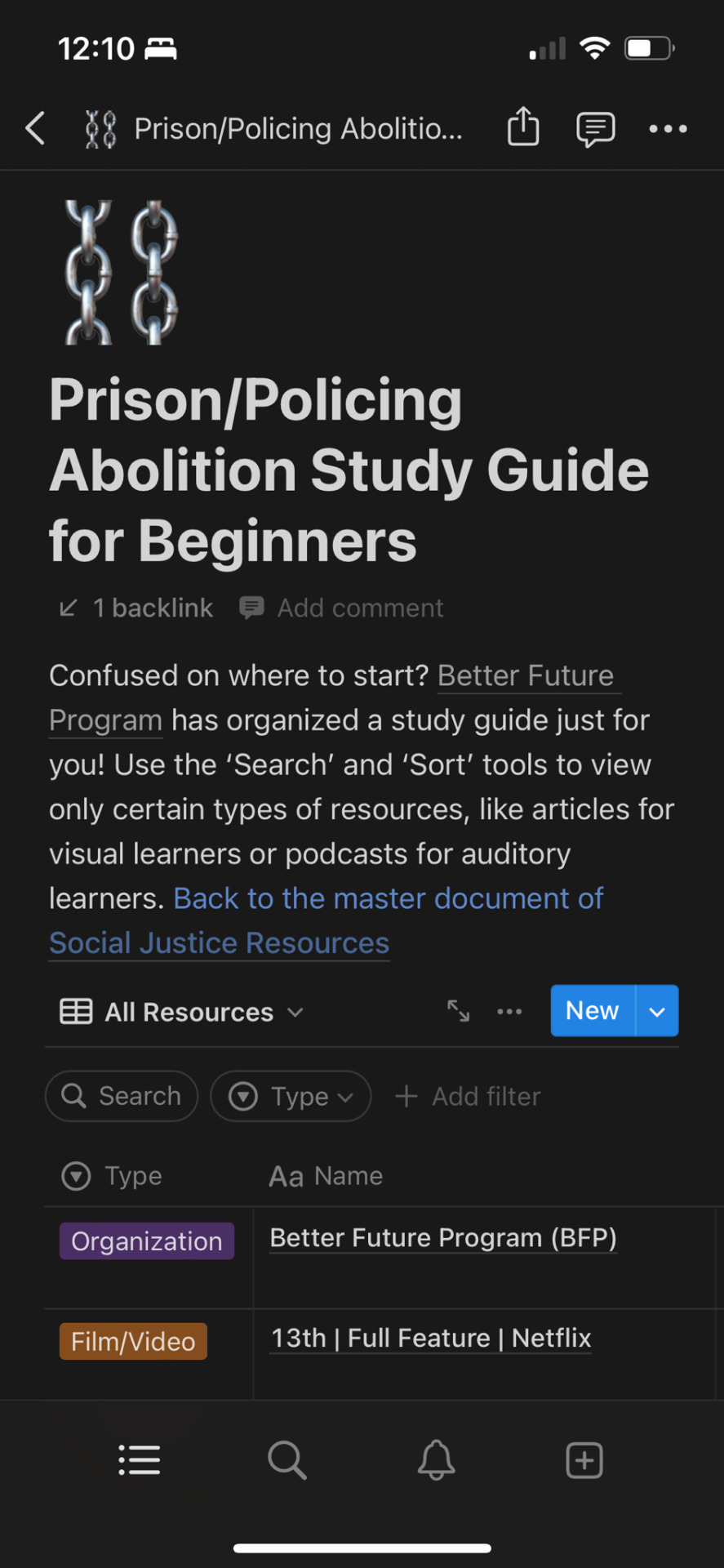



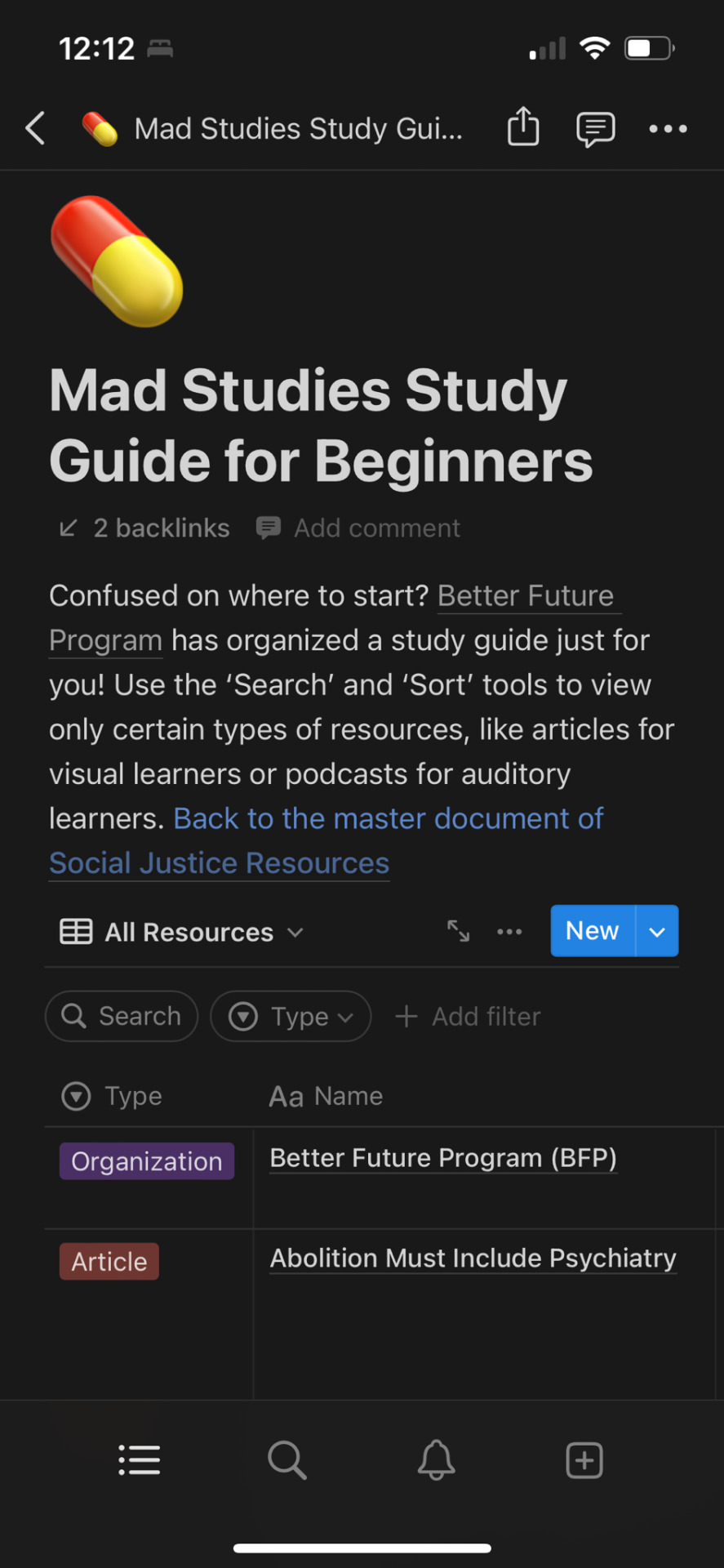

just wanted to remind everyone again not only of the 3,000+ resources offered through our Liberation Library but also of the study guides for beginners offered under each of our social justice topics!
resources can be organized by type (article, novel, podcast, video, etc.) as well as filtered and searched through. we’ve tried to make our system much more accessible than our former platform on google docs so this is such an exciting development to share with everyone.
please share to promote equitable access education!and if you’d like to volunteer with us, check out our open resources committee roles!
REBLOG THIS VERSION! image description by @bonesandblood-sunandmoon below the cut. thank you for writing one!
[Image Description: Six screenshots of beginner study guides on mobile view. The main text visible under each title reads:
Confused on where to start? Better Future Program has organized a study guide just for you! Use the ‘Search’ and ‘Sort’ tools to view only certain types of resources, like articles for visual learners or podcasts for auditory learners. Back to the master document of Social Justice Resources.
Five of the study guides have the start of a list of resources available with color coded resource types visible - Posts have a purple box, for example. Each study guide has an image. Prison/Policing Abolition has an image of chains, Organizing has two humanoid figures hugging, Classism and Anti-Capitalism has a stack of dollar bills, Anarchism has the red ‘A’ in a circle, Mad Studies has a yellow and orange capsule/pill, and Free Palestine has the flag of Palestine.
/End description.]
#reaux speaks#resources#educational equity#abolition#organizing#anti capitalism#anarchism#palestine#mad liberation#free palestine#israel
18K notes
·
View notes
Text

“We are advocates of the abolition of war, we do not want war; but war can only be abolished through war, and in order to get rid of the gun it is necessary to take up the gun.”
Mao Tse-Tung
#anti imperialism#free palestine#palestine#national liberation#mao zedong#maoism#little red book#marxism leninism#intifada
3K notes
·
View notes